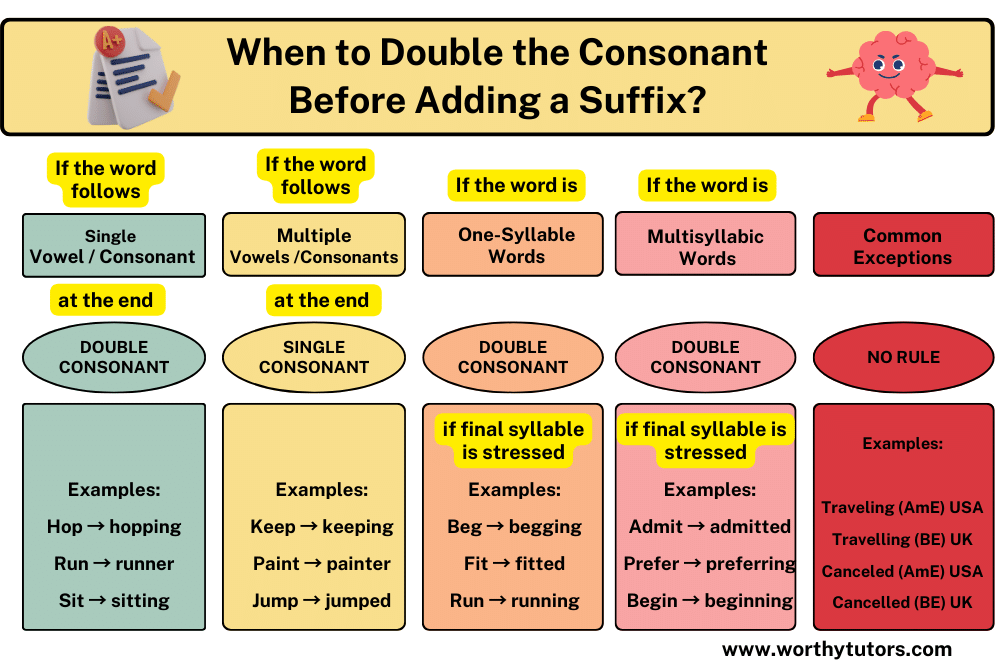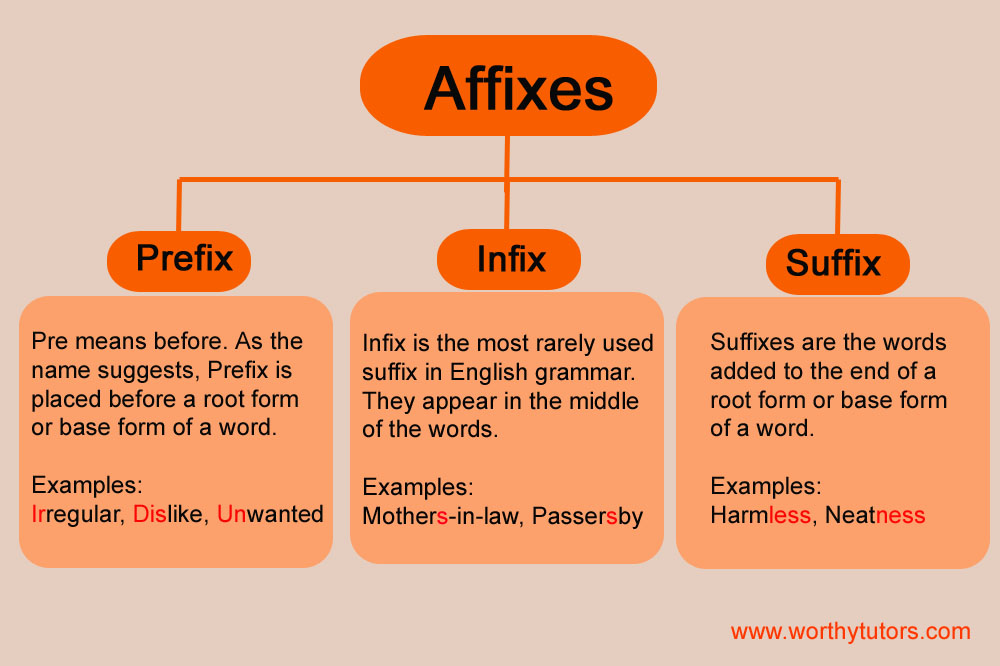
The English language has a rich vocabulary with complex spelling rules. However, there are few words that do not comply with English spelling rules because of certain reasons. One of the mains reasons is borrowing and etymology of the different words. While adding suffixes to root words, one particular challenge that often perplexes learners is when to double a consonant before adding a suffix. In this article, we will explore the guidelines that govern when to double a consonant
The General Rules for adding consonant before suffix:
The decision to double a consonant before adding a suffix hinges on the syllable structure and the preceding vowel sound in the base word. The general rule can be summarized as follows:
1. Single Vowel, Single Consonant:
When a one-syllable word or a multisyllabic word with stress on the final syllable ends in a single vowel followed by a single consonant, double the final consonant before adding a suffix.
Examples:
- Hop → hopping
- Run → runner
- Sit → sitting
2. Multiple Vowels or Consonants:
If the word has more than one vowel at the end or ends in more than one consonant, there is no need to double the final consonant before adding a suffix.
Examples:
- Keep → keeping
- Paint → painter
- Jump → jumped
The Role of Stress and Syllables:
Understanding syllable stress is crucial in determining whether a consonant should be doubled. Stress often falls on the final syllable of one-syllable words or the final syllable of multisyllabic words when certain conditions are met.
1. One-Syllable Words:
In one-syllable words, the final consonant is doubled if the word follows the vowel-consonant-vowel pattern and the final syllable is stressed.
Examples:
- Beg → begging
- Fit → fitted
- Run → running
2. Multisyllabic Words:
In multisyllabic words, the final consonant is doubled when the word ends in a single consonant preceded by a single vowel, and the final syllable is stressed.
Examples:
- Admit → admitted
- Prefer → preferring
- Begin → beginning
Common Exceptions:
While there are general guidelines, English, being the mosaic of exceptions that it is, has a few outliers. Some words defy the rule and do not double the final consonant, even if they meet the typical criteria. A few examples include “travel,” “cancel,” and “model.”
Conclusion:
Navigating the decision to double a consonant before adding a suffix requires an understanding of syllable patterns, stress, and the nature of the base word. By internalizing these rules and recognizing common exceptions, learners can enhance their spelling skills and confidently apply this linguistic principle in their written and spoken communication. The journey to mastery involves practice, exposure to diverse words, and a keen eye for the subtle nuances of English spelling.


